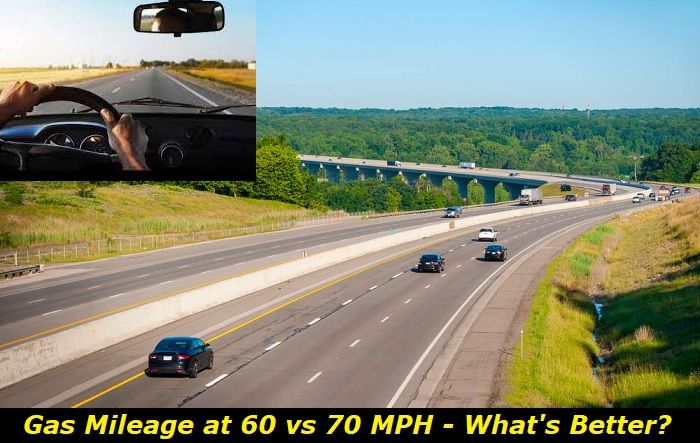The master warning light is the triangle with an exclamation mark inside it. This light actually tells you that there is a problem that you need to pay attention to. You should make sure you don't take it for some other problem. Like the ESP warning light which is also a triangle with an exclamation mark but encircled by the arrow.
Master warning light highlights
- Common reasons:problem in one of the control modules
- How to fix:read the codes, disconnect the battery for some time
- Possible consequences:the problem may escalate
- Priority level:Medium
- Can you drive?Carefully
- DIY repair:Impossible
- Repair price range:$150-$500
.jpg)
What's essentially the master warning light in Nissan cars?
Unfortunately, Nissan developed this feature differently in various models and years. That's why some Nissan vehicles will have one master warning light, and some other cars of this brand will have two of them. It may be yellow or red or it may only be yellow if there is just one master warning light in your car.
As I've already said, this light is there on the dashboard of your car to draw some attention and it doesn't mean anything else but "Hey, look at the dash, there is a warning light or error message waiting for you to deal with it!"
If you see the yellow master warning light, the target warning or error also should be yellow. It means it doesn't require immediate attention and you can continue driving. The problem just needs to be recognized and dealt with in the near future.
If the master warning light is red, things are a little worse. You've got a red alert from your Nissan and it's most likely that you will need to stop the vehicle and inspect the possible problem. This issue may affect the safety of your driving or some equipment in your vehicle may be in danger.
What should you do when you see the master warning light?
If there is a master warning light in your Nissan car, you should understand that something is wrong. But what exactly? You can get it just by looking at the dash and searching for another warning light or error message that you have.
Very often, we just don't look at the dash when the message appears. After that, the message may disappear and the warning light will stay on. In this case, you may want to check the active error messages in the menu or just restart the car and see if it repeats the message.
Here's what you should usually do when you see a triangle with an exclamation mark in it:
- look for another warning light or error message explaining the problem to you;
- if you don't know what a current icon means, you should stop your vehicle and find this out;
- in most cases, the problem won't be that serious and you will be able to keep on driving;
- but with red alerts, you will need to make sure that your car is still safe to drive;
- in some cases, a proper inspection will be needed as the master warning light may accompany the check engine light that's hard to decode.
Although the master warning light in your Nissan may really accompany many different problems including engine issues and brake problems, it usually comes on the dash in one of these cases:
- key is not detected;
- fuel level is too low;
- washer fluid needs to be added;
- you need to release the parking brake;
- one of the doors is open (it may be also the trunk or hood);
- the fuel cap is loose;
- tire pressure is wrong.
This is just the example list of what kind of problems the master warning light may be trying to tell you about. It's almost always easy to understand the actual reason just by carefully looking at the dashboard.
Why ignoring this warning light is not good?
Ignoring any warning in your car is not a good idea because it may eventually be one of the fatal failures that you overlook. For example, if the master warning light is telling you that the handbrake is applied, you need to react quickly. Otherwise, you may just lose the rear brake pads in several minutes.
Also, an open door is a matter of safety. Especially, if it's the door of the rear passenger who is your child. It's never worth it to risk the safety of your passengers, so checking the exact reason for this warning light in your Nissan is extremely important.
I should also say that ignoring error messages and lights is a bad tradition in the US. Many drivers don't care about those signs that their cars are asking for help. And while now it can be just the start of the problem, in just 100 miles, you may get a fatal failure of one of the important systems like brakes or emission system, for example.
What if only the master warning light is illuminating?
Nissan owners pretty often ask one weird question. They say: I only see the master warning light on my dash and no other lights are active and there are no messages on the dashboard. What's this?
Here are three possible reasons why this may happen:
- You are looking at some other warning light. The triangle with an exclamation mark may be encircled by an arrow. And this is not the master warning light. This light shows that there is a problem with the ESP system or that the ESP is active right now.
- The message has already gone. Error messages usually don't sit there forever. The master warning light may remain illuminating while the initial error message may be gone. In this case, you may search for the error message in settings or just turn the car off and then on again.
- Something is glitchy. If you actually see only the master warning light with no problems behind it, you may be dealing with a dying ECU or fatally low battery. In these cases, the system may develop some glitches and you will not know what's wrong with your car.
So, yes, there is a chance that you will only see the master warning light. But the chance of it being a glitch of the ECU is something like one in a million. This will most likely be one of the first two options. You need to make sure that everything is OK and your car is safe to drive.
What do people take for master warming light?
First on the list is the ESP light. It's the same as the master warning light (the triangle with the exclamation mark) but it's encircled by the arrow. This light comes on the dash when the ESP is activated and is now trying to stabilize your car on the road. Alternatively, it can light up when there is a problem with your ABS or ESP systems.
Also, the blinking triangle with the exclamation mark in it may mean in some Nissan vehicles that the emergency lights are on. It means that the blinkers on both sides are blinking because you most likely pressed the emergency light button.
Sometimes, the master warning light can also be confused with the brake warning light. This one may come on the dash when the pads need revision or the fluid in the braking system is low.
Nissan cars can be pretty misleading with their warning lights. I've written a big article about the "two cars crashing" warning light - you can read it here.
Can you reset the master warning light?
To get rid of the master warning light, you need to get rid of the problem. For example, if it comes on with the tire pressure warning, you need to add pressure to the tire in question and also drive for some time or manually reset the tire pressure monitor.
If the warning light tells you about the low windshield washer fluid, it's time to add the fluid and then the light will disappear promptly.
There is no direct way to reset the master warning light. And there is no need to try and cope with this light because it only means that you need to pay attention to some problem with your vehicle.
I hope you will never have any questions about this triangle with an exclamation mark inside it again.
About the authors
The CarAraC research team is composed of seasoned auto mechanics and automotive industry professionals, including individuals with advanced degrees and certifications in their field. Our team members boast prestigious credentials, reflecting their extensive knowledge and skills. These qualifications include: IMI: Institute of the Motor Industry, ASE-Certified Master Automobile Technicians; Coventry University, Graduate of MA in Automotive Journalism; Politecnico di Torino, Italy, MS Automotive Engineering; Ss. Cyril and Methodius University in Skopje, Mechanical University in Skopje; TOC Automotive College; DHA Suffa University, Department of Mechanical Engineering






Add comment